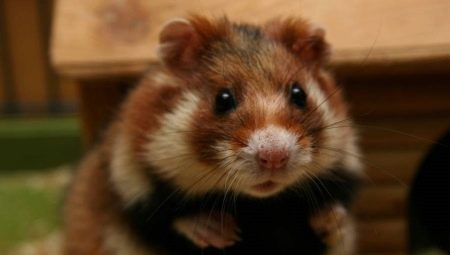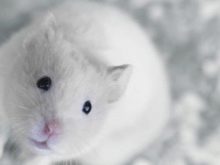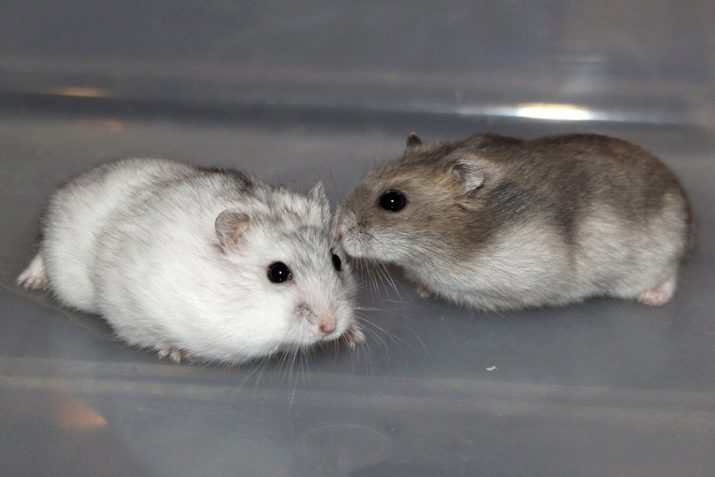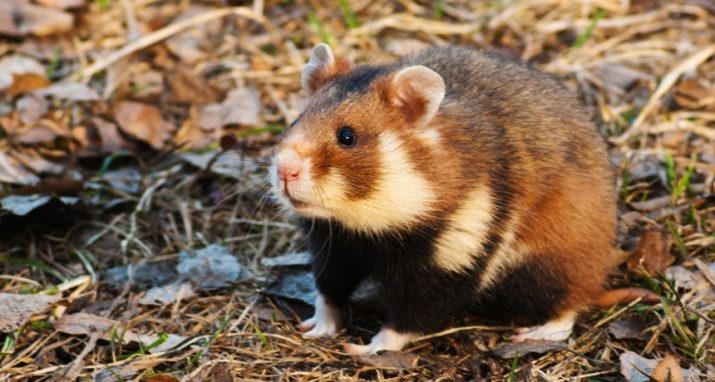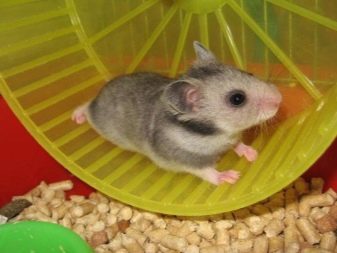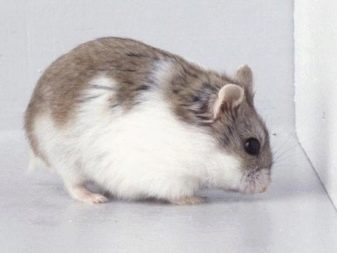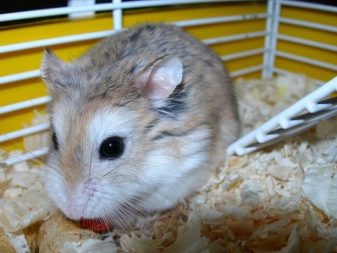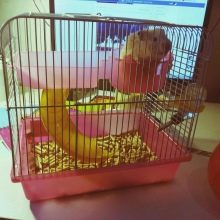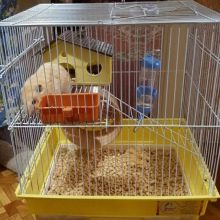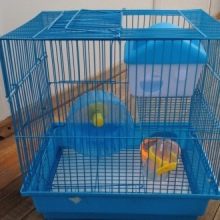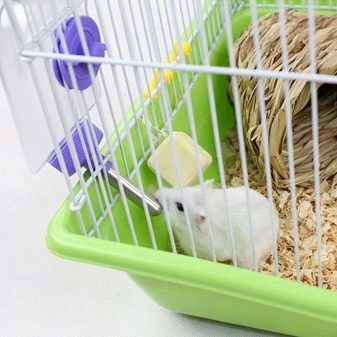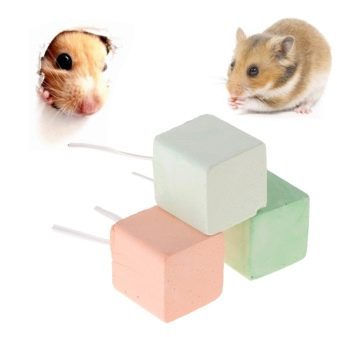Siberian hamsters are cute dwarf animals, which are often purchased for children. The animal does not require special care or exotic feeding, so the child can easily cope with the care of a hamster on their own. This will bring him responsibility, hard work, kindness and love.
Appearance
The baby looks like a cute fluffy ball with an inconspicuous tail. Its dimensions are 7-8 cm in length. Under natural conditions, it weighs 25-30 g, but in a satisfying home environment, lazy hamsters get fat and can gain weight up to 50 g.
Siberians have black and gray hair with a brown stripe running through the back. Genetics offer several other colors. But in any case, for the winter hamster will change the color of his coat to white. In pets, the change of color is not pronounced, and the field it is vital.
Habitat
In their natural habitat, the hamsters of this breed inhabit the steppes and hilly plains of Siberia and Northern Kazakhstan. They live in the burrows, which they themselves create. This crumb can dig a labyrinth up to one and a half meters in depth with a total stroke length of up to 8 m. In the labyrinth he equips himself with a warm nest for sleeping and dead-end “storage rooms” for storing grains.
In winter, in a natural environment, in order not to waste energy, hamsters become torpid. This state is not a full hibernation, as animals have to wake up for snacking. Severe frosts and predators do not allow hamsters to live for their own pleasure - their average life expectancy is 2-2.5 years, while domestic inhabitants can live up to 3-4 years.
Hamsters do not like companies, so they live alone or in small groups formed at a young age.
"Their" from "alien" they are distinguished by the smell, which publishes a special gland, located in their abdomen.
Character traits
It is very pleasant to hold a soft ball in your hands, and it is also fascinating to watch him. The behavior of the animal changes under the influence of external factors: night time, temperature fluctuations, fright, curiosity. Features of the behavior of these animals is the following factors.
- Older individuals are not particularly agile, but the young are more energetic - they like to make some noise (especially at night). When choosing a place for a cage, nocturnal animal should be considered.
- Hamsters are orientated in space with the help of antennae, which determine the size of the object or hole in which to climb.
- Animals mark their territory by claiming rights to it. They are loyal to individuals living with them since childhood; they recognize everyone by their characteristic odor and do not force them out of their habitat. But to strangers attitude is completely different. It is better to keep same-sex animals in one cage or one male and several females.
- Hamster, engaged in their hygiene - quite hilarious sight. Whoever loves these animals, can spend hours watching how they lick their paws and quickly wash out their tiny little faces and little bodies, and then use their claws to brush their hair. In fact, they separate the fur of their cover and make it more fluffy, which affects the preservation of heat. Instincts got hamsters from Siberian living conditions in the wild.
- Frightened hamster behaves restlessly - he tossed around the cage or pressed to the floor. If he feels danger, he makes frightening sounds and grins his teeth. At this point it is better not to touch him, as he can bite.
- At the moment of curiosity, the animal can stand on its hind legs, and the front ones can reach for the subject of interest. He explores his antennae and legs.
- Sometimes, watching a hamster, you can notice how it drags sawdust to itself in the nest and buries it in them. This behavior suggests that the pet has frozen. If he starts to tear and scatter sawdust, it means that he is hot.
- The animals are ready to breed at the age of one month, but it is better to let them wait at least three months. The gestation period of the female is nineteen days. If a couple lives in different cells, then they should be combined in order to produce offspring in a neutral territory.
Content
For those who first decided to have a hamster, you should familiarize yourself with the rules of content, as well as their behavior and habits, understand all the pros and cons. The hamster is a living creature, and, bringing it into the house, a person takes responsibility for his existence. The positive aspects of keeping the animal at home are as follows:
- he is sweet and in most cases benevolent;
- contact with such a pet for children is not dangerous;
- children acquire good qualities: caring and responsibility;
- hamsters are not picky about food;
- they are easily tamed, while they can be taught to small tricks;
- it is easy to find a place for a small cage;
- are inexpensive - you can always afford to buy a budget and unpretentious pet.
Also worth noting are the negative aspects of the hamster's stay in the apartment:
- he will have to take care of, clean the cage, otherwise the smell will appear;
- the kid likes to make noise at night, so the cage should be kept away from the bedroom;
- sometimes you can buy a little animal that loves to poke;
- Hamsters do not live long, and children can be hard to experience the loss of a pet.
If the minuses seem to be not so significant, you can safely get a hamster, because he will take a lot of pleasure with his touching appearance and behavior.
Where to place?
Before you bring a hamster into the house, you need to prepare a place to live. If this is not taken seriously, the crumb will be lost in a large apartment and die.
Hamsters are not very demanding to the environment, but they feel good at a comfortable temperature of 17 to 26 degrees Celsius.
All that is unpleasant to us, do not like the hamster. Defining a cell in one place or another, you should consider whether it will be comfortable there. Given the negative impact of some places in the house, we can conclude that you can not put a cage:
- near the radiator;
- on a window sill, under direct sunshine;
- near working equipment;
- in a draft;
- in noisy places;
- in the bedrooms (given the nightlife of pets).
What should be the cell?
The hamster is a rodent, and this should be taken into account when choosing material for a dwelling. Pet cage suitable with metal rods or aquarium. Siberian hamsters lack jumping ability, so the aquarium can not be covered from above. As for the cell, the distance between the rods should be no more than 7-9 mm, otherwise the animal will try to escape.
The cage itself should be spacious, as the pet needs to run. It is better to provide a second floor if you need to place game structures. Sawdust is chosen as a floor covering.
The animal will react to the empty cage with fear, because a person does not like living in an apartment without furniture. The hamster dwelling should be comfortably arranged.
- It will take a house to sleep. In the wild, hamsters live in burrows, so the self-preservation instinct remains in cramped cage conditions. In the house they feel safe.
- It is better to fix the feeder and the trough so that the hamster does not turn over, but you need to make it removable so that you can wash it.
- Mineral stone is necessary for the animal to care for teeth. Gnawing at him, the hamster cleans and strengthens fangs, and also grinds them, adjusting the normal length.
- Running wheel. Siberian hamsters are prone to obesity, so for them running wheel is a must.It will satisfy their nightly need for movement and allow them to maintain a healthy shape.
- Toilet for the hamster can be purchased at the pet store, and the pet must understand that there is a special place for the toilet.
Care
Caring for animals, above all, provides for proper nutrition. Twice a day, it should be fed with grain and granulated mixtures, which can be purchased at the pet store. An additional vitamin set, consisting of fruits, herbs and vegetables. In the diet you can add a little chicken breast, cottage cheese or egg.
As for the walk, it does not mean going to the street or running around the apartment. Such a walk is dangerous both for the hamster and for the furniture, which he will begin to try for a tooth. In the pet store you need to buy a special walking ball that will protect the animal from trouble and allow it to run enough.
Once or twice a week, the hamster should clean the cage.
A little effort will help the pet to always be healthy and happy.
The story about the life of Siberian hamsters, see below.
